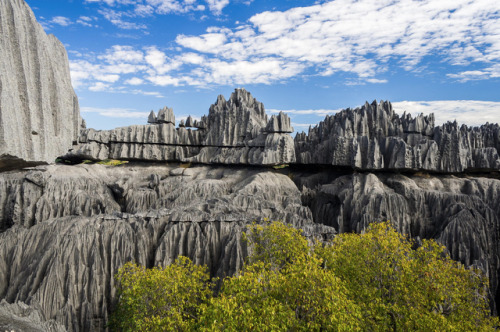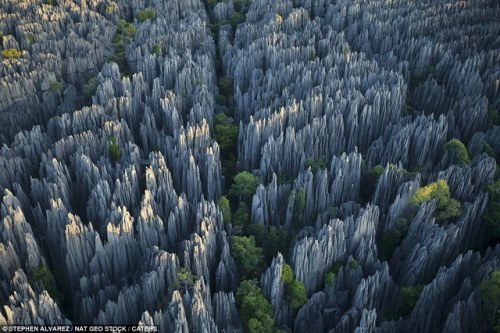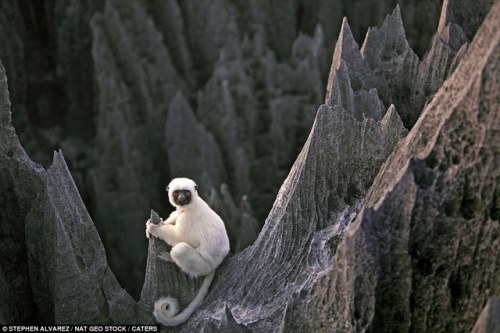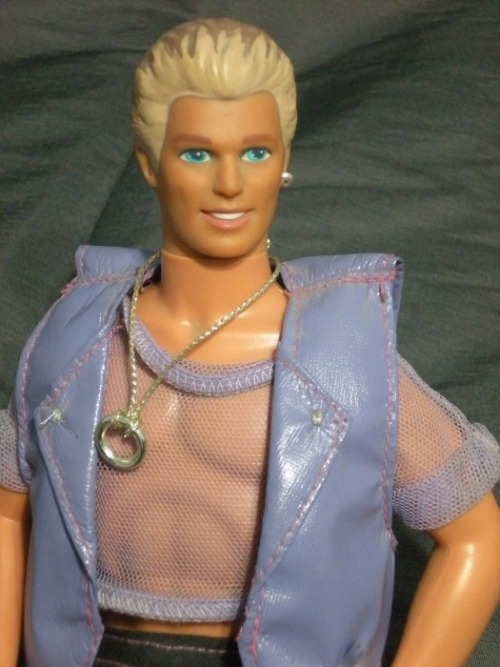“It’s Just So Cool That [five] Women Were The Best People To Call.” - Team Member Emma Liu.

“It’s just so cool that [five] women were the best people to call.” - team member Emma Liu.
More Posts from Echozeta and Others
Land is Sliding, Tell Us Where!
Summer in the northern hemisphere brings monsoon season, causing heavy rains and flooding that trigger landslides. Next time you see a landslide in the news, online, or in your neighborhood, submit it to our citizen science project Landslide Reporter to build the largest open global landslide catalog and help us and the public learn more about when and where they occur.
Rainfall is the most common cause of landslides.
After a storm, the soil and rock on a slope can become saturated with water and begin to slide downwards, posing a danger to people and destroying roads, houses and access to electricity and water supplies.

We have been monitoring rainfall from space for decades.
Orbiting the Earth right now, the Global Precipitation Measurement (GPM) mission is a group of 10 satellites that measure rain, snow, sleet and other precipitation worldwide every three hours. This data tells us where and when heavy rain is falling and if it could lead to disasters.

What can rainfall data tell us about landslides?
We’re using GPM data to understand where and when landslides are happening. A global landslide model uses information about the environment and rainfall to anticipate where landslides are likely to happen anytime around the world every three hours.

To improve the global landslide model and other landslide research, NASA is looking for citizen scientists like you!
If you find a landslide reported online or in your neighborhood, you can provide the event details in Landslide Reporter, our citizen science project.

Your detailed reports are added into an open global landslide inventory available at Landslide Viewer. We use citizen science contributions along with other landslide data to check our prediction model so we can have a better picture of how rainfall, slope steepness, forest cover, and geology can trigger a landslide.

Because the data is open, anyone can use the data for research or response.
When you report a landslide, you improve our collection of landslide data for everyone.
Help support landslide efforts worldwide by contributing to Landslide Reporter, and you can help inform decisions that could save lives and property today! Learn more about the project at https://landslides.nasa.gov. You can also follow the project on Twitter and Facebook.
Make sure to follow us on Tumblr for your regular dose of space: http://nasa.tumblr.com.



Madagascar, Tsingy. These knife-like limestone formations stretch over 70 meters into the air. Known as The Forest Of Knives, these razor-sharp limestone points can slice through equipment and flesh easily, which makes traversing them extremely difficult and dangerous, some climbers have been known to get through over 15 pairs of boots! It is estimated that the Tsingy has the largest underground cave system in the world and many animals live among the endless maze of disorienting corridors, humid caves, and unforgiving razors at the ground level. (Image one credit: Pierre-Yves Babelon)






I’ve wanted to do this for a really long time, but after finishing the art institute I finally got the courage to do it! And also because I’m down on my luck because unemployment…
Will draw:
OCs
Fanart
Couples
Won’t draw:
NSFW
Mecha
Furries
IMPORTANT
(+6$ per additional character)
Simple backgrounds are free. Normal ones are from 2 to 4$, depending on difficulty.
If you send me a message, let me know your request. References are welcome.
Payment via Paypal only.
EDIT: More details in this form. Please fill up the necessary info if interested.
Please contact me at kuromiya92@hotmail.com if interested.
And thanks for stopping by~





the suffering never ends

In case you missed it: DNA testing recently provided more evidence that the tomb of a high-rank viking warrior – replete with war horses, weapons, and strategy games – was that of a woman.

In the wake of the Weinstein scandal, a group of women - including Walt Disney’s grand-niece - got together to bid for his company’s assets. While as yet unsuccessful in their bid, they weren’t about to wait around: they formed a new startup to back projects by women and people of color.


ok this is “earring magic ken” who was introduced in 1992 (and discontinued shortly thereafter)
basically mattel had done a survey and discovered that girls didn’t think ken was “cool” enough
SO someone had the bright idea to research coolness by sending people to raves which, at the time, were mostly hosted & attended by gay men. so they went to these raves and took notes on what the fashions were and finally landed on this outfit, mesh shirt & all
this doll became the best selling ken doll in history, mostly because gay men bought it in droves. (many of them said his necklace was supposed to be a cockring) but mattel and a number of parents weren’t very amused and discontinued the doll
10 Things: Mysterious 'Oumuamua
The interstellar object ‘Oumuamua perplexed scientists in October 2017 as it whipped past Earth at an unusually high speed. This mysterious visitor is the first object ever seen in our solar system that is known to have originated elsewhere. Here are five things we know and five things we don’t know about the first confirmed interstellar object to pass through our solar system.
1. We know it’s not from around here.
The object known as 1I/2017 U1 (and nicknamed ‘Oumuamua) was traveling too fast (196,000 mph, that’s 54 miles per second or 87.3 kilometers per second) to have originated in our solar system. Comets and asteroids from within our solar system move at a slower speed, typically an average of 12 miles per second (19 kilometers per second) . In non-technical terms, 'Oumuamua is an “interstellar vagabond.”

Artist impression of the interstellar object ‘Oumuamua. Credit: ESA/Hubble, NASA, ESO, M. Kornmesser
2. We’re not sure where it came from.
'Oumuamua entered our solar system from the rough direction of the constellation Lyra, but it’s impossible to tell where it originally came from. Thousands of years ago, when 'Oumuamua started to wander from its parent planetary system, the stars were in a different position so it’s impossible to pinpoint its point of origin. It could have been wandering the galaxy for billions of years.

3. We know it’s out of here.
'Oumuamua is headed back out of our solar system and won’t be coming back. It’s rapidly headed in the direction of the constellation Pegasus and will cross the orbit of Neptune in about four years and cover one light year’s distance in about 11,000 years.
4. We don’t really know what it looks like.
We’ve only seen it as a speck of light through a telescope (it is far away and less than half a mile in length), but its unique rotation leads us to believe that it’s elongated like a cigar, about 10 times longer than it is wide. We can’t see it anymore. Artist’s concepts are the best guesses at what it might look like.
5. We know it got a little speed boost.
A rapid response observing campaign allowed us to watch as 'Oumuamua got an unexpected boost in speed. The acceleration slightly changed its course from earlier predictions.
“This additional subtle force on ′Oumuamua likely is caused by jets of gaseous material expelled from its surface,” said Davide Farnocchia of the Center for Near Earth Object Studies (CNEOS) at NASA’s Jet Propulsion Laboratory. “This same kind of outgassing affects the motion of many comets in our solar system.”
6. We know it’s tumbling.
Unusual variations in the comet’s brightness suggest it is rotating on more than one axis.

This illustration shows ‘Oumuamua racing toward the outskirts of our solar system. As the complex rotation of the object makes it difficult to determine the exact shape, there are many models of what it could look like. Credits: NASA/ESA/STScI
7. We don’t know what it’s made of.
Comets in our solar system kick off lots of dust and gas when they get close to the Sun, but 'Oumuamua did not, which led observers to consider defining it as an asteroid.
Karen Meech, an astronomer at the University of Hawaii’s Institute of Astronomy, said small dust grains, present on the surface of most comets, may have eroded away during ′Oumuamua’s long journey through interstellar space. “The more we study ′Oumuamua, the more exciting it gets.” she said. It could be giving off gases that are harder to see than dust, but it’s impossible to know at this point.
8. We knew to expect it.
Just not when. The discovery of an interstellar object has been anticipated for decades. The space between the stars probably has billions and billions of asteroids and comets roaming around independently. Scientists understood that inevitably, some of these small bodies would enter our own solar system. This interstellar visit by ‘Oumuamua reinforces our models of how planetary systems form.

9. We don’t know what it’s doing now.
After January 2018, ’Oumuamua was no longer visible to telescopes, even in space. But scientists continue to analyze the data gathered during the international observing campaign and crack open more mysteries about this unique interstellar visitor.
10. We know there’s a good chance we’ll see another one…eventually.
Because ′Oumuamua is the first interstellar object ever observed in our solar system, researchers caution that it’s difficult to draw general conclusions about this newly-discovered class of celestial bodies. Observations point to the possibility that other star systems regularly eject small comet-like objects and there should be more of them drifting among the stars. Future ground- and space-based surveys could detect more of these interstellar vagabonds, providing a larger sample for scientists to analyze. Adds, Karen Meech, an astronomer at the University of Hawaii’s Institute of Astronomy: “I can hardly wait for the next interstellar object!“
Make sure to follow us on Tumblr for your regular dose of space: http://nasa.tumblr.com.
-
 smoklendysptisi liked this · 1 year ago
smoklendysptisi liked this · 1 year ago -
 bookwyrmth1rt33n liked this · 5 years ago
bookwyrmth1rt33n liked this · 5 years ago -
 manicvegananimevoyager liked this · 5 years ago
manicvegananimevoyager liked this · 5 years ago -
 creative-username-lost liked this · 6 years ago
creative-username-lost liked this · 6 years ago -
 stoopsitter reblogged this · 6 years ago
stoopsitter reblogged this · 6 years ago -
 arielgirly reblogged this · 6 years ago
arielgirly reblogged this · 6 years ago -
 arielgirly liked this · 6 years ago
arielgirly liked this · 6 years ago -
 apathetic-altruistic liked this · 6 years ago
apathetic-altruistic liked this · 6 years ago -
 yesstrongwomen reblogged this · 6 years ago
yesstrongwomen reblogged this · 6 years ago -
 i-speak-graffiti liked this · 6 years ago
i-speak-graffiti liked this · 6 years ago -
 why-so-srs reblogged this · 6 years ago
why-so-srs reblogged this · 6 years ago -
 dearosprey liked this · 6 years ago
dearosprey liked this · 6 years ago -
 pseuglam reblogged this · 6 years ago
pseuglam reblogged this · 6 years ago -
 hoennislands reblogged this · 6 years ago
hoennislands reblogged this · 6 years ago -
 vdoc reblogged this · 6 years ago
vdoc reblogged this · 6 years ago -
 vdoc liked this · 6 years ago
vdoc liked this · 6 years ago -
 im-doing-better-now-bitch reblogged this · 6 years ago
im-doing-better-now-bitch reblogged this · 6 years ago -
 im-doing-better-now-bitch liked this · 6 years ago
im-doing-better-now-bitch liked this · 6 years ago -
 inkbotkowalski reblogged this · 6 years ago
inkbotkowalski reblogged this · 6 years ago -
 princessmovieticket liked this · 6 years ago
princessmovieticket liked this · 6 years ago -
 feministevoperspectivessociety reblogged this · 6 years ago
feministevoperspectivessociety reblogged this · 6 years ago -
 magicalgirlshana reblogged this · 6 years ago
magicalgirlshana reblogged this · 6 years ago